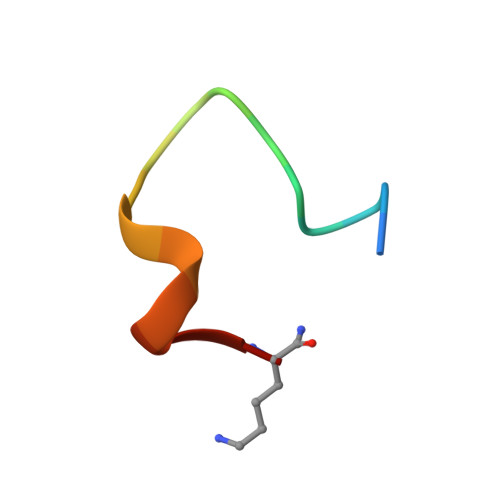Interplay of histidine residues of the Alzheimer's disease A beta peptide governs its Zn-induced oligomerization.
Istrate, A.N., Kozin, S.A., Zhokhov, S.S., Mantsyzov, A.B., Kechko, O.I., Pastore, A., Makarov, A.A., Polshakov, V.I.(2016) Sci Rep 6: 21734-21734
- PubMed: 26898943
- DOI: https://doi.org/10.1038/srep21734
- Primary Citation of Related Structures:
2MGT - PubMed Abstract:
Conformational changes of Aβ peptide result in its transformation from native monomeric state to the toxic soluble dimers, oligomers and insoluble aggregates that are hallmarks of Alzheimer's disease (AD). Interactions of zinc ions with Aβ are mediated by the N-terminal Aβ(1-16) domain and appear to play a key role in AD progression. There is a range of results indicating that these interactions trigger the Aβ plaque formation. We have determined structure and functional characteristics of the metal binding domains derived from several Aβ variants and found that their zinc-induced oligomerization is governed by conformational changes in the minimal zinc binding site 6HDSGYEVHH14. The residue H6 and segment 11EVHH14, which are part of this site are crucial for formation of the two zinc-mediated interaction interfaces in Aβ. These structural determinants can be considered as promising targets for rational design of the AD-modifying drugs aimed at blocking pathological Aβ aggregation.
Organizational Affiliation:
Engelhardt Institute of Molecular Biology, Russian Academy of Sciences, 119991, Moscow, Russia.















